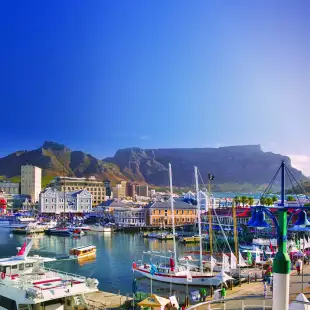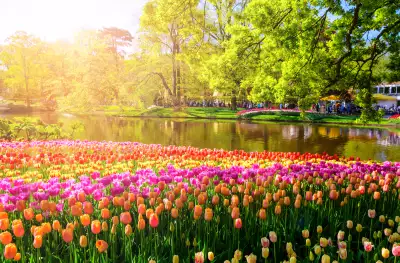All Things Wild and Wonderful

African safaris are often right at the top of people’s bucket lists, especially when you’ve been watching David Attenborough narrating wildlife documentaries. But how about actually doing one yourself? There are several choices of location, all with their different benefits and unique eco-systems. Wherever you go, you'll be spotting an entire array of fantastic species in their natural habitat. From elephants marching across great savannah plains to hippos being nosy in waterholes, there's more to be seen than can ever be seen on an African safari. It’s only natural we include at least one (or a few) Lion King (1994) references, right?
If there were one more thing I could do, it would be to go on safari once again.
Safari Origins
The Swahili word ‘safari’ literally means ‘journeying across Africa over a period of days or week’. Of course, today the word is associated with travelling cross country over the African plains to observe animals in their natural kingdom, but hundreds of years ago, the word was linked to trading. Different culture groups would travel ‘safari’ to share their cultures with new people. Over time the word has had several meanings, but it wasn’t long before safari meant exploration. And in the 20th century, adventurers began exploring the extraordinary continent, identifying new species of plants and wildlife.
Since then, it has changed its meaning again. And that’s where you come in. Today, embarking on a modern safari means supporting the conservation of wildlife, local communities and the sustainability of economies. Tourism is important to the continent, bringing in over millions of dollars each year. Whether it’s south, east or central Africa, there’s no end of wildlife spotting when you’re riding across the African plains. This is the opportunity of a lifetime.

Animal Spotting
From the day you arrive on an African safari, blinking, stepping– getting a bit carried away there. There's nothing quite like the feeling of embarking on your first expedition into the wilderness. Riding 4x4 vehicles across the sweeping savannahs or lush forests is certainly going to be an unforgettable experience. Most safari tours begin before the sun rises when all the wild and wonderful animals are their most active. Listen to the ‘dawn chorus’ as the birds signal the start of another day and observe all kinds of marvellous creatures making the most of the cooler temperatures. See the silhouettes of giraffes against the morning orange skies, hear the chatter of hyenas before they sleep for the day and, before it goes out of frame, snapshot a cheetah running at speeds of up to 70mph. It's only natural we give you some more animals you’re likely to come across – wild dogs, pythons, crocodiles, antelope, warthogs, fish eagles and many, many more. It's so wonderful out where the wild things are.
There’s no limit to how much you’ll know, depending how far beyond zebra you go.

Facts about the Big Five
Rhinoceroses, buffalo, elephants, leopards and lions – these are the most likely contenders when you think of Africa. Here are just a few fascinating facts about the ‘Big Five’:
- Rhinoceroses will sometimes accidentally attack trees due to their poor sight.
- The colour of a male lion’s mane signifies its age.
- Leopards are nocturnal cats (top points for anyone who spots one in the daytime).
- There is no king, it's female lions that defend their pride.
- Elephants can communicate at a low frequency unheard by humans.
- Buffalos will occasionally avenge their fallen peers by attacking the lion whodunnit.

Different Locations
Africa is all about the call of the wild. And with astonishing animals in every part, we’ve put together the key places for your dream safari.

South Africa
South Africa’s star-studded savannahs are a wildlife paradise. Notably Kruger National Park, the oldest and arguably most popular African park. With hundreds of species of mammals, reptiles and birds, the Big Five won’t be the only animals you’ll be ticking off your bucket list. Travel in 4X4 vehicles across some of the best roads in Africa, whilst you look in every nook and cranny for the world’s most wonderful creatures. Interact with elephants, watch herds of kudu drinking at waterholes or embark on a night-time safari for snippets of civet, porcupine and black backed jackal. And when you’re done for the day, tented camps are the perfect excuse to live out your best glamping dreams.
Kenya
In the southwest of Kenya lies Maasai Mara National Reserve, the most accessible game viewing location in the world. 1,500 square kilometres in size, the reserve is famed for its breathtaking natural beauty and being home to an assortment of extraordinary animals, boasting one of the highest densities of mammals in the continent. See the likes of the flamingos balancing in the waters, white rhinos, over 400 species of bird and no end of lions. The area is also home to Maasi tribes largely untouched by modern society. So, if you’re keen to put your dancing shoes on, this is your opportunity to get a first-hand – and respectful – look into their culture and traditions.
One of the great things about traveling in Africa is that you find out how many good, kind people there are.

Botswana
Chobe National Park is home to the world’s biggest herds of massive elephants, as well as a diverse array of fantastical creatures. Unlike the other two locations, Botswana isn’t as well-known which is perfect for a less-crowded safari. Here, see the majestic sights of Leopard Rock, where monoliths stand tall in the otherwise flat plains. Its caves, undergrowth and chasms are the ideal habitat for – you've probably guessed it – Botswana’s leopards. Other locations include zebras in Savuti Marshes, Kasane Forest Reserve and Caracal Biodiversity Centre – a centre dedicated to rescuing all kinds of wildlife – mongoose, birds and (don’t tell Indy) a whole lot of snakes.
Just one more? Okay, Hakuna Matata (it means no worries).

These are just a few of the wild things you can do on an African Safari. How about checking out our full list of wildlife and safari tours?



















